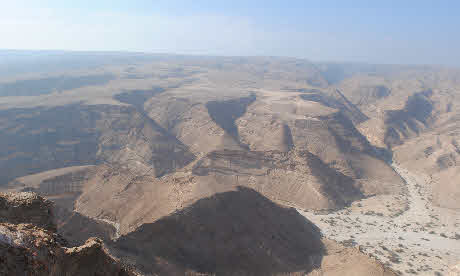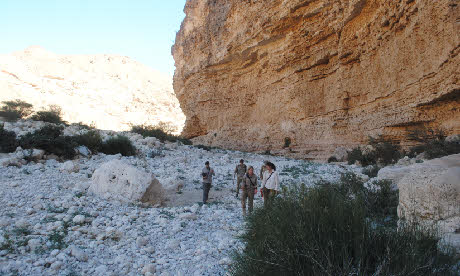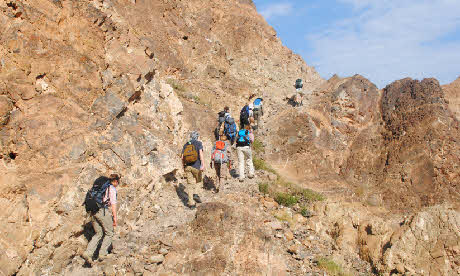
Searching for Arabian leopards in Dhofar, Oman
The Arabian leopard is a true rarity: only an estimated 250 exist worldwide. Alex Kendall headed to south-west Oman, home to a handful, to see how volunteers can help bolster numbers
“You don't want to sleep down there. It is rare, but if there is rain you can have flash floods. You will hear a rumbling, and then the water.” I nodded at Mohammed, an Omani ranger, who'd imparted this wisdom. He had come to the canyon with his colleagues, and was helping us cook a few days' supply of flat breads. We took his advice, and slept regularly on ledges above the canyon base, tucked under the cliffs.
The local rangers, working for Oman's Office for Conservation, accompanied us on most of our surveys into the deep, dry canyons of Dhofar, in south-western Oman. These limestone wadis and their surrounding mountain ridges spend most of the year devoid of water, but from July to September they have their own monsoon, the khareef. During those few months, the desert turns a lush green and comes to life with wildlife. The area's unique ecology supports the largest population of the endangered Arabian leopard, and we were on a surveying expedition with the British Exploring Society (part of the RGS) in Dhofar, to look for signs of their existence.
 Exploring on foot (Alex Kendall)
Exploring on foot (Alex Kendall)
The Jebel Samhan nature reserve, to the east of Dhofar, has a known population of leopards, numbering around 20 of a global population of 100 to 250 individuals. Their numbers are constantly threatened by development and hunting. There is also a leopard population to the west, in Yemen. We were in Qamar – between these two areas – where conservation work is concentrated. Any leopards found here could be a sign that the two populations can interbreed, which would be vital for the future of the leopards' survival. Any such evidence would also be beneficial for the environment, too: there are plans to build limestone quarries in more than one spot, which would destroy the leopards' habitat.
Our group, mostly amateurs in fieldwork, were hoping to contribute to conservation in the region. We surveyed in groups of up to ten, sleeping under the stars and snacking on dates and noodles. The main limitation was water, which had to be collected at pumps along the road and then carried down into the wadi. Washing was a luxury.
We spread out across the wadi floor and as far as we could up the crumbling sides, moving slowly, looking for animal signs. Everything in the area was recorded, and promising sites had a camera-trap set up to monitor anything passing by. Sometimes, the best discoveries happened by accident: a set of scratch marks in the dry mud only seen as we stopped for lunch nearby, or a paw print in the sand spotted just as we were about to turn round for the day. At the end of the expedition, we set off to collect the traps, sitting around nervously as the photos were examined for leopard sightings.
 Trekking along the wadi (Alex Kendall)
Trekking along the wadi (Alex Kendall)
By day, the wadi was quiet. The February sun was a constant scourge; we took midday naps hidden under shady overhangs while lunch simmered on sun-baked wood. Animals didn't come out at midday either, though we sometimes saw a bird or two, and insects. Any breeze was welcome, ruffling the paper bark of the frankincense trees on the nearby hillsides. The craggy rock formations cast peculiar shadows on the wadi floor as the day progressed.
The mammals came out mostly after dark, showing up as ghostly images on the camera-traps. Hyaena, wolf, ibex, wildcat and fox, and finally – at a remote spot, miles from any roads and accessible only on foot – that crucial image of the leopard, prowling under an overhang, seeking its prey in the darkness.
Expeditions can be 4 or 8 weeks in duration; for more information and to book, see British Exploring.


